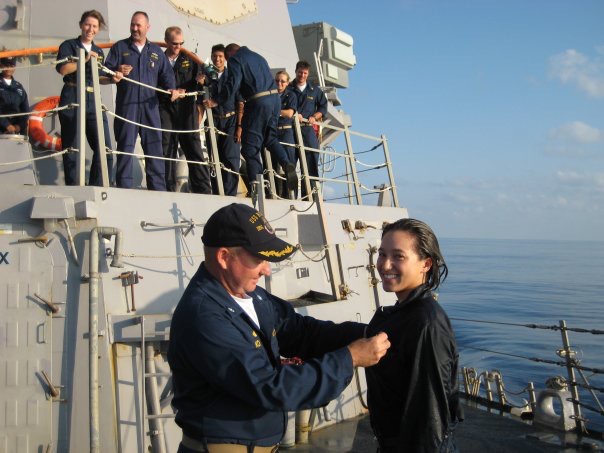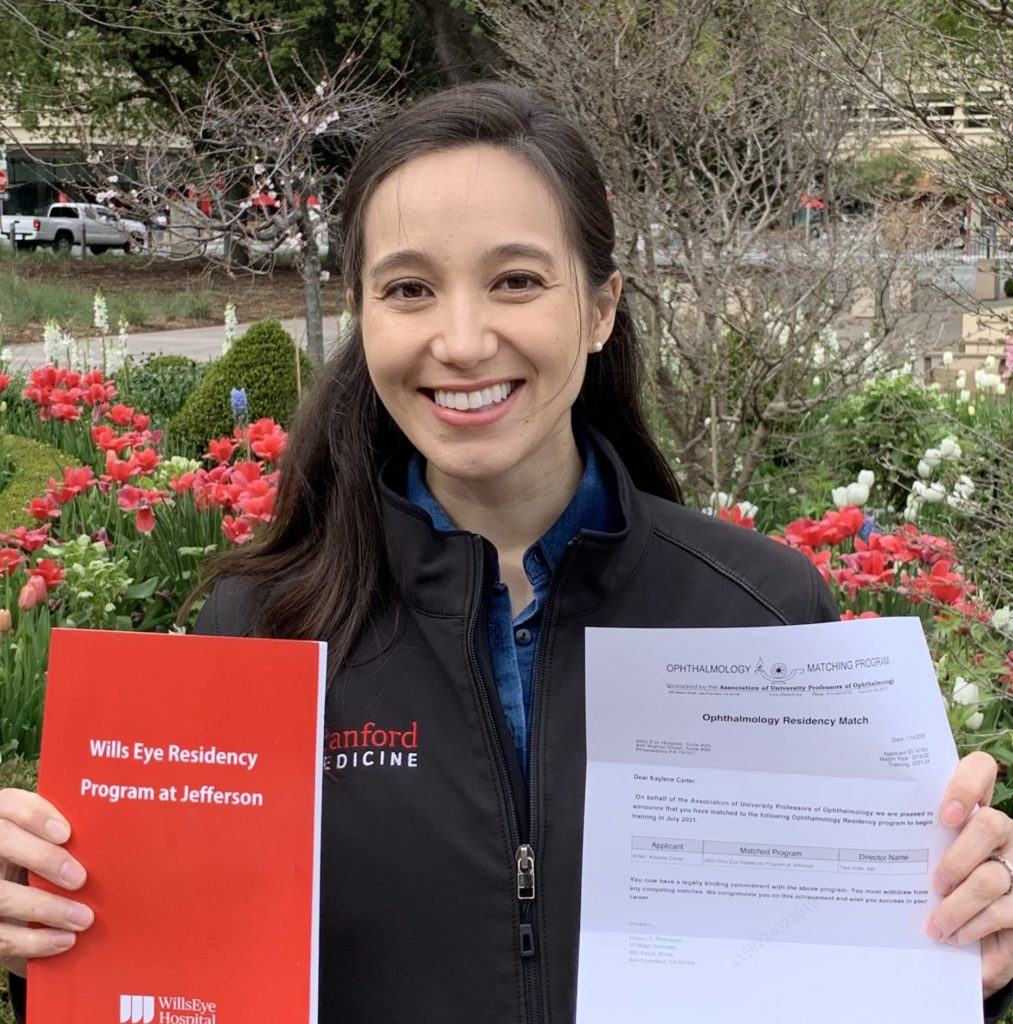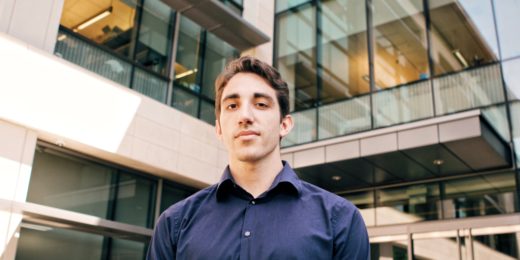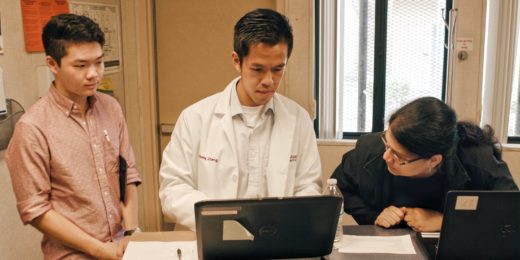Because she's decided to specialize in ophthalmology, Stanford medical student Kaylene Carter got her first bit of Match Day news in the predawn hours of January 14.
Hovering with her husband Brandon over her laptop at 5 a.m., they learned she had matched with her first choice, Wills Eye Hospital in Philadelphia, for her three-year residency beginning in 2021.
They'll find out their second bit of news -- where Carter will go for her internship year starting this summer -- on Friday, the nation's official Match Day. That day, she and other students graduating this spring from U.S. medical schools will learn where their next phase of training will take place. This year, because of the COVID-19 pandemic, students will forego the traditional gatherings and instead communicate their news to each other through digital means.
"I'm a little nervous, but more so just looking forward to finding out," Carter said. "This match is much more celebratory -- It's our last big hoorah before graduation, and I can't wait to see where everyone is headed!"
Carter's journey to medicine began after she achieved her first career goal: becoming a surface warfare officer in the U.S. Navy.
She told us about her seven years of military service when we spoke for the #WeAreStanfordMed video series, which spotlights Stanford medical students and the impact of financial assistance on their education and aspirations.
"The ideals that they ingrain in you -- honor, courage, integrity, commitment -- it was really important to me to be surrounded by a diverse group of people with those same core ideals," she said.
Growing up in Beltsville, Maryland -- just a stone's throw away from the U.S. Naval Academy -- Carter embraced the challenge of attending a school and joining a service where an overwhelming majority of the students are male.
"It was kind of fun being in a 'mostly guys' environment and just being able to hold your own," she told us. "You have to prove yourself a lot as a woman in the Navy."
After graduating, Carter served for two years on the destroyer U.S.S. Hopper, based out of Pearl Harbor. The ship deployed to the Persian Gulf in support of the Iraqi War, defending oil platforms off the coast of Iran and Iraq. The ship also did a shorter deployment to Asia to practice ballistic missile defense operations.

Leading a group that ran the ship's electrical equipment, Carter learned how to drive the ship -- how to navigate and maneuver the 505-foot steel frame, communicate with other naval and commercial vessels in open ocean and inland waters, conduct common shipboard procedures, like anchoring, and avoid running aground and other navigational hazards.
"My first day on the ship, I was basically told, 'Okay, your job is the electrical officer, and you're in charge of 12 sailors. They're going to be looking up to you for guidance and for leadership -- looking up to you to protect them, too'," she told us.
After the deployment, Carter earned a master's degree in electrical engineering at the Naval Postgraduate School, and even obtained a patent for her work on an algorithm that uses television signals for positioning when GPS signals are unavailable.
However, something she saw during her time on the Hopper inspired her to consider a career switch. In the Navy, hospital corpsmen are emergency medical technicians who also help with prevention and treatment and do humanitarian aid missions. Carter became fascinated with their work.
On the ship at sea, she rarely glimpsed the people they were helping in the countries they were protecting. "With the medical services, I loved that you could see directly the person that you're impacting," she told us.
Volunteering at a local hospital solidified Carter's decision to pursue medicine. She said she chose Stanford because of the quality of education, research opportunities and diversity of the student body -- and because Palo Alto is less than two hours' drive from Monterey, where her husband, a lieutenant commander in the Navy specializing in meteorology and oceanography, would be stationed.

In her third year, Carter became enthralled with ophthalmology -- the complexity of the eye, the possibilities for engineering new therapies, the dramatic results from treatment.
Through work with David Myung, MD, PhD, she contributed to ophthalmology research supported by funding from the National Eye Institute and the U.S. Department of Veterans Affairs that could potentially benefit military service members. Her project investigated a way to heal corneal wounds -- injuries that are often sustained by soldiers in combat -- through a combination of growth factors secreted by stem cells.
Last summer, on a clinical rotation at the Veterans Affairs Palo Alto Health Care System, Carter had the opportunity to care for fellow former service members.
"Usually when a patient finds out I was in the military, too, they light up, feeling a little bit better about the person who's providing them care, realizing that we were in similar shoes and have been through similar experiences," she told us. "I do love being able to say that."
#WeAreStanfordMed is a video series spotlighting Stanford medical students and the impact of financial assistance on their education and aspirations.
Top photo and video by Luceo. Bottom photos courtesy of Kaylene Carter.






